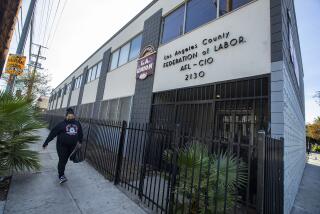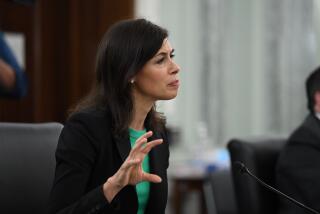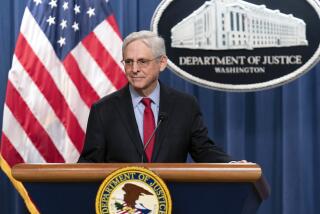Sandy Hook 911 debate pits privacy against public’s right to know
- Share via
The same day the FBI released video showing Aaron Alexis hunting down people in the halls of the Washington Navy Yard, Connecticut law enforcement officials were defending their refusal to make public 911 recordings from December’s Sandy Hook Elementary School massacre.
The Connecticut officials lost; the state’s Freedom of Information Commission on Wednesday ordered the state’s attorney in Danbury, Stephen Sedensky III, to release the recordings. But Sedensky plans to appeal, promising to extend a legal battle that has raised the question of when the public’s right to know supersedes the need for sensitivity toward victims’ families -- especially when the victims were young children gunned down in their classrooms.
“This is a case about crime victims and witnesses who shouldn’t have to worry that their calls for help, at their most vulnerable moments, will become fodder for the evening news,” Sedensky said as he argued his case before the commission.
Critics say releasing such information, no matter how painful, can reassure the public that everything possible was done to stop the carnage.
“They are a clear record of government activity, and the public has the right to know what the government is doing to them and for them,” said Kenneth F. Bunting, executive director of the National Freedom of Information Coalition. “I understand the concern for having the survivors and loved ones reliving the horror of the incident, but those people are also entitled to know how their government responded at that time.”
The daughter of slain Sandy Hook principal Dawn Hochsprung said releasing the information could also help her come to terms with what happened on Dec. 14, 2012, when 20-year-old Adam Lanza shot his way into Sandy Hook Elementary School.
“The more information I have, the easier it is to wrap my brain around what happened,” Cristina Hassinger said, according to the Connecticut Post.
The dispute dates to the day of Lanza’s rampage, when he shot his mother, Nancy Lanza, in the Newtown home they shared. Lanza then drove to the school, where he shot dead 20 first-graders and six school employees. Lanza shot himself to death in the school hallway.
The Associated Press requested copies of 911 calls made from the Lanza home dating to 1998 and from Sandy Hook dating back to 2002. It also asked for police reports involving the Lanza family. The AP appealed to the state’s Freedom of Information Commission in late February after Newtown police, acting at Sedensky’s behest, denied the requests.
This is the latest battle over information on one of the worst mass shootings in U.S. history, which revived the national debate over gun control and sparked calls for better monitoring of the mentally ill.
In Connecticut, it also led to a tightening of the release of public information about heinous crimes.
Last June, in direct response to the Newtown killings, the state passed a law sealing visual images of homicide victims on grounds that releasing them would “constitute an unwarranted invasion of the personal privacy of the victim or the victim’s surviving family members.”
The state’s medical examiner has not released results of toxicology tests on Lanza. Details of what, if any, documents he or his mother left behind that might shed light on his mental state remain out of the public eye.
The secrecy is striking in light of the quick release of information -- from 911 recordings to pictures and video -- in other notorious crimes.
In the Navy Yard case, the FBI made public video of portions of Alexis’ rampage nine days after it occurred. It also released details of a note Alexis left behind describing his belief that he was being targeted by an “ultra-low frequency attack.”
Information, from 911 recordings to videos and still images, have also been made public after other high-profile crimes. The 911 calls made by Sanford, Fla., residents after George Zimmerman shot dead Trayvon Martin quickly went public. So did some of the recordings of 911 calls made to police in Aurora, Colo., in July 2012 when James Holmes opened fire inside a movie theater.
But when it comes to state Freedom of Information laws, Bunting said, “the law is all over the map.”
Some states keep 911 tapes sealed. Some allow the transcript of calls to be made public, but not the audio. They all offer exemptions to when 911 records, either written or audio, can be made public, and Sedensky says several exemptions apply in the Sandy Hook case.
Among other things, he said the 911 records could reveal the identity of witnesses, opening them up to harassment. Sedensky also cited an exemption on the release of information about child abuse cases, given the victims’ ages.
Most of all, he said that making the information public could put prosecutors “at the mercy of a criminal seeking to find out what law enforcement knows” as the investigation continues.
At Wednesday’s hearing, the commission’s chairman, Owen Eagan, argued that Sedensky hadn’t listened to the tapes and therefore couldn’t be certain that any information on them might be used in a prosecution -- should any prosecution occur.
The commission’s hearing officer, Kathleen Ross, rejected the child abuse argument in an August memorandum recommending the tapes’ release. None of the calls that day was made to the Department of Children and Families, Ross wrote.
State lawmakers clearly have struggled with the privacy issue in the wake of Newtown.
State Sen. Bob Duff, a Democrat who voted in favor of the victim privacy bill in June, said there was “definitely a fine line” between protection of victims and the public’s right to know.
“You have to think sometimes as a legislator without passion or prejudice. But on the other hand, emotion does kind of take over,” he told Connecticut’s News 12. “If there’s just some small things we can do to help them [victims’ parents] in a way that [would] make their lives a little bit better, I think we’re willing do to that.”
But one of the two lawmakers who voted against the privacy bill, Sen. Ed Meyer, said making public the ugliness of such crimes is crucial to preventing more of them.
“The more we understand about our ugliness, the better chance we have to overcome that ugliness,” he said. “Suppression of horrific conduct … invites history to repeat itself.”
Sedensky said Friday that he had not yet seen the Freedom of Information Commission’s final report but planned to appeal its order. He has 45 days to do so.
In the meantime, the 911 calls will remain sealed.
ALSO:
‘Dreamers’ stage action in Laredo, Texas
U.S. bridges crumble as repair funds fall short
No negligence in deaths of 19 Arizona firefighters, report says
Follow L.A. Times National on Twitter
More to Read
Sign up for Essential California
The most important California stories and recommendations in your inbox every morning.
You may occasionally receive promotional content from the Los Angeles Times.











